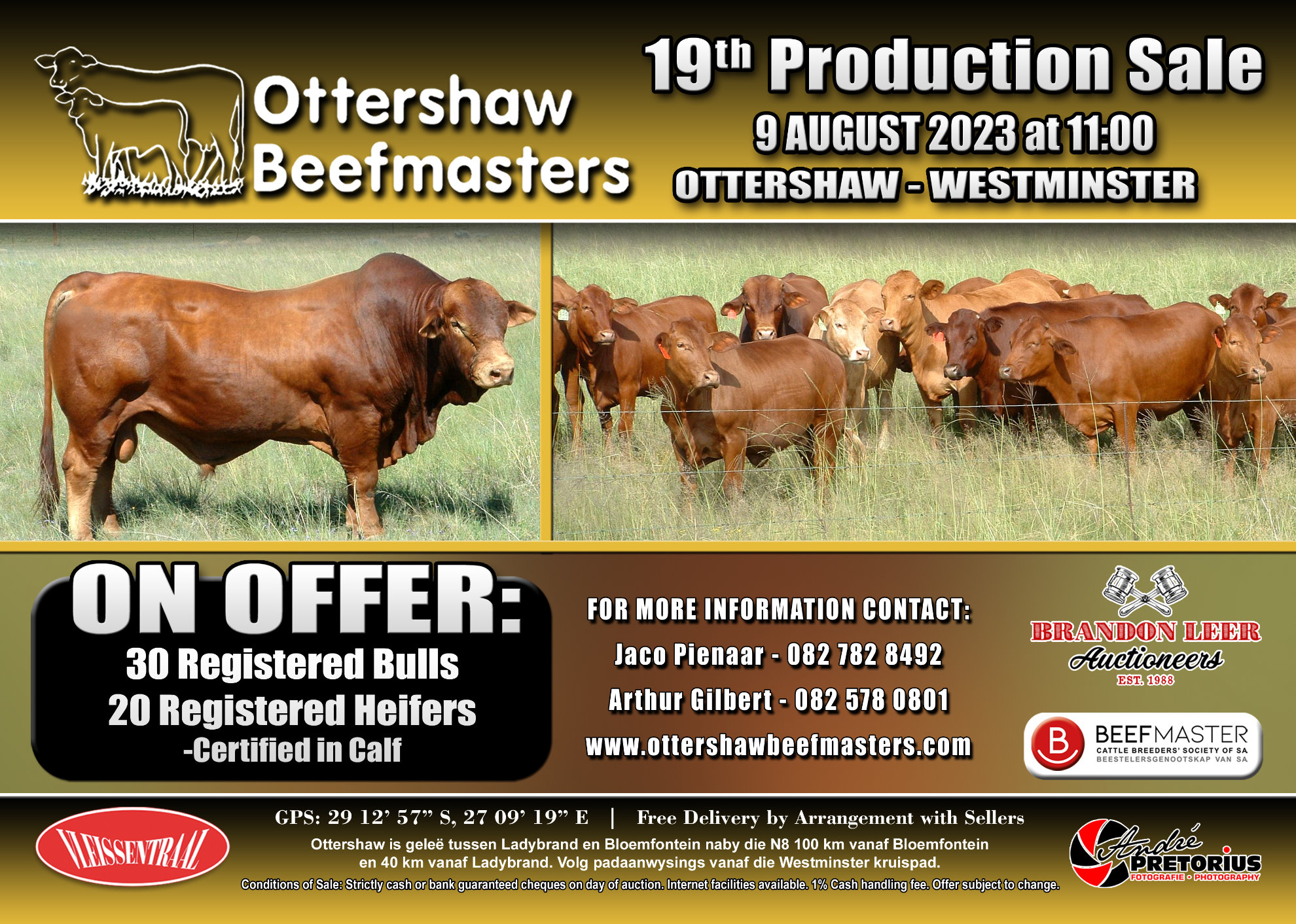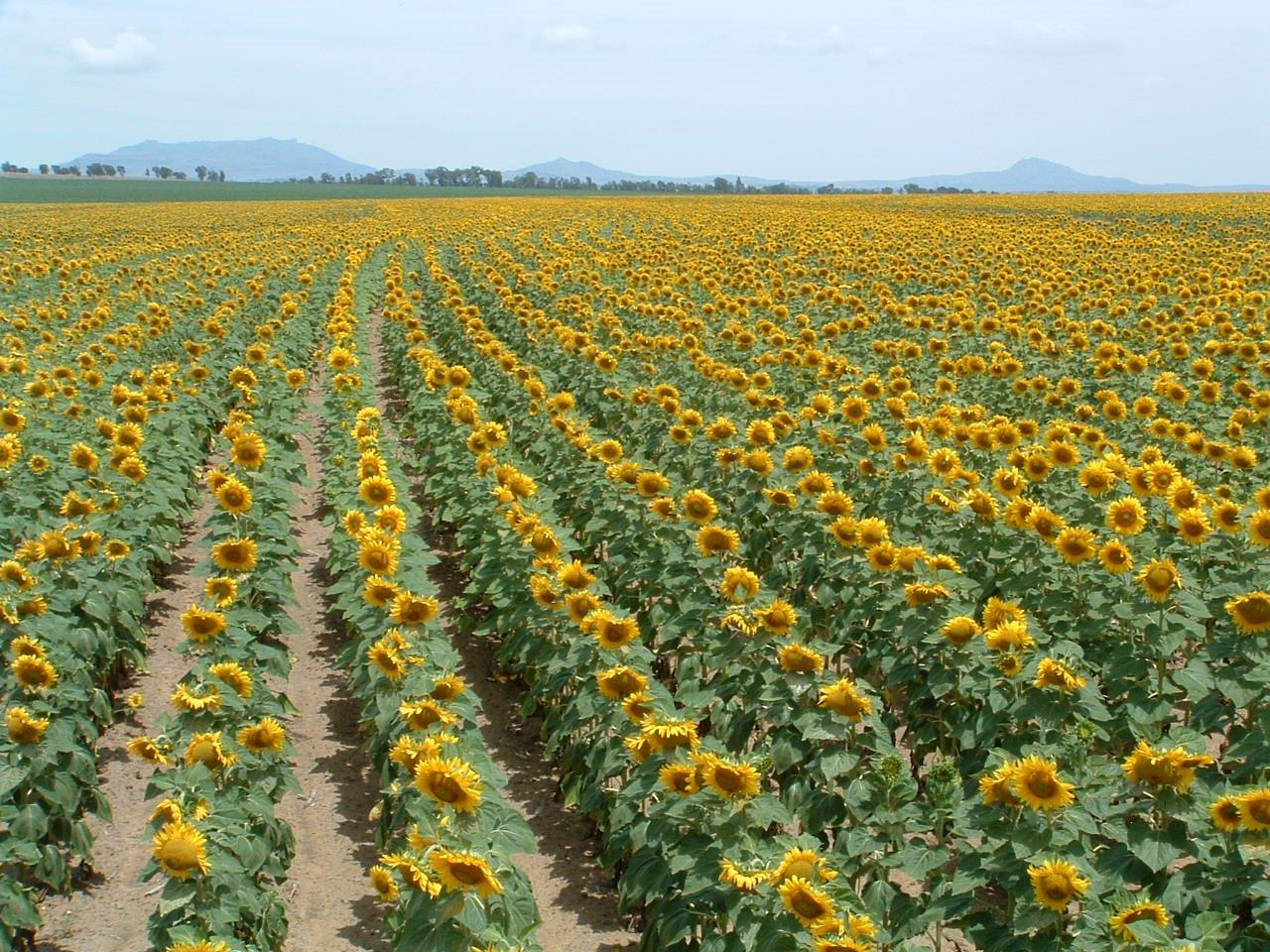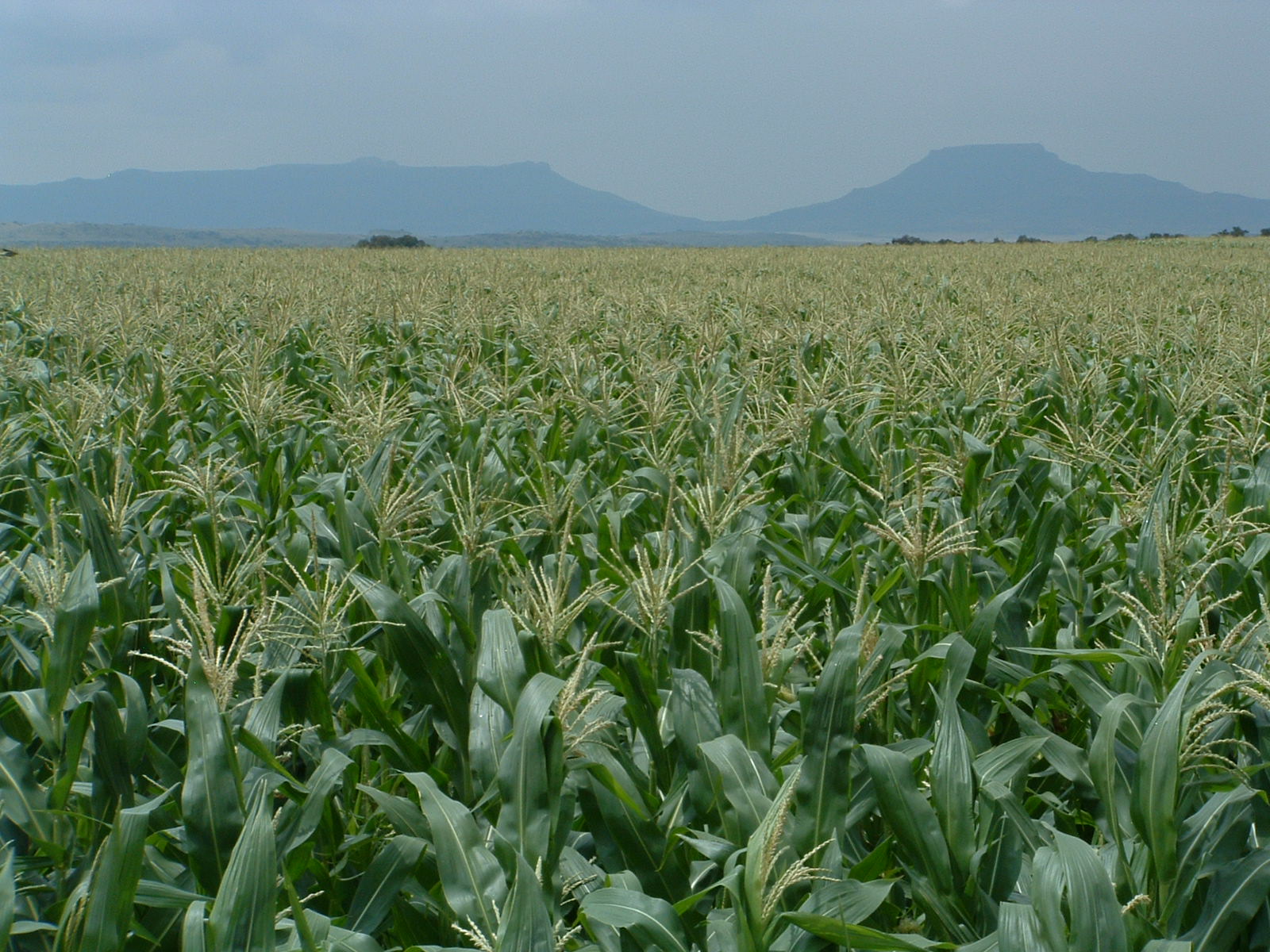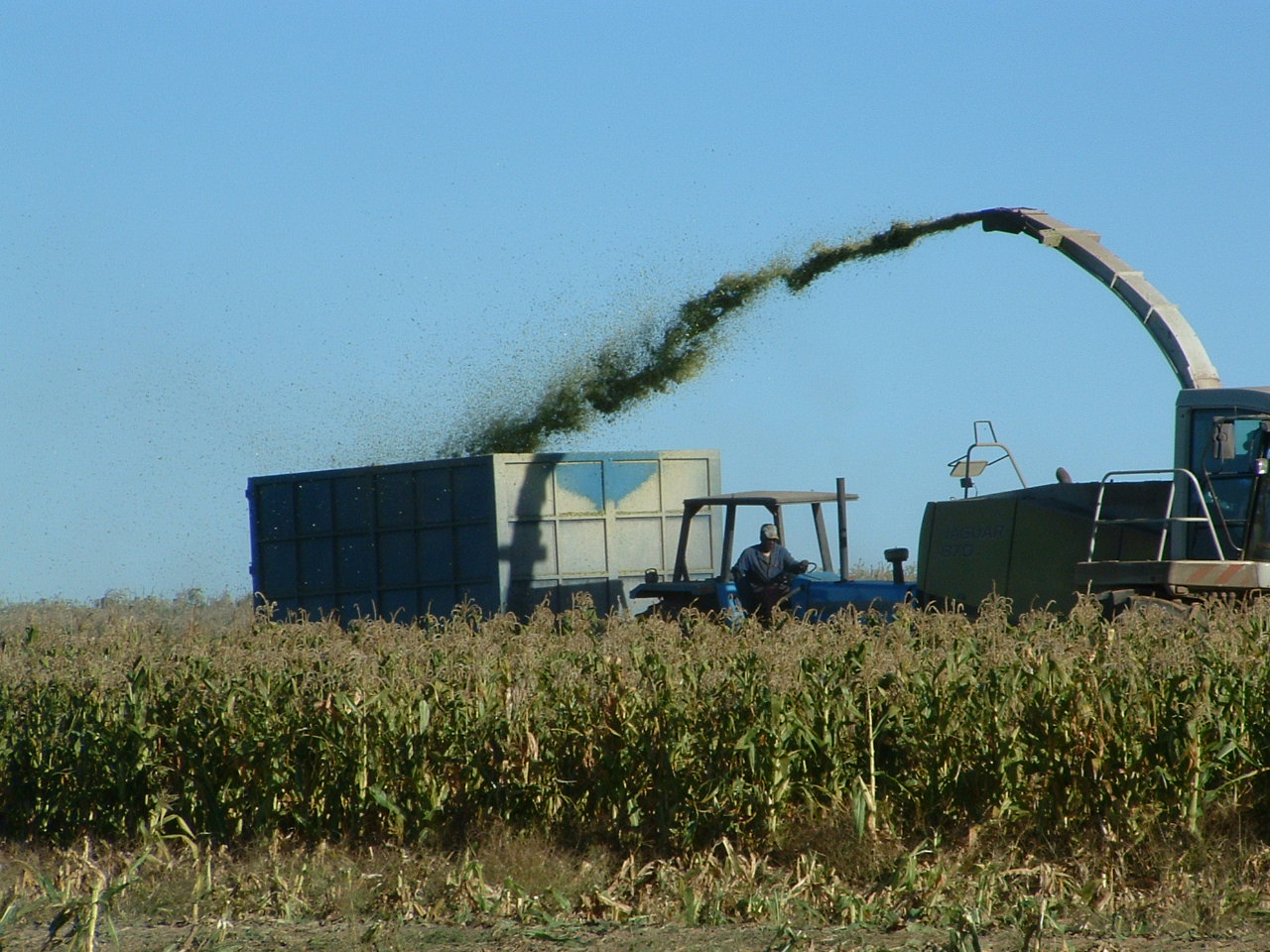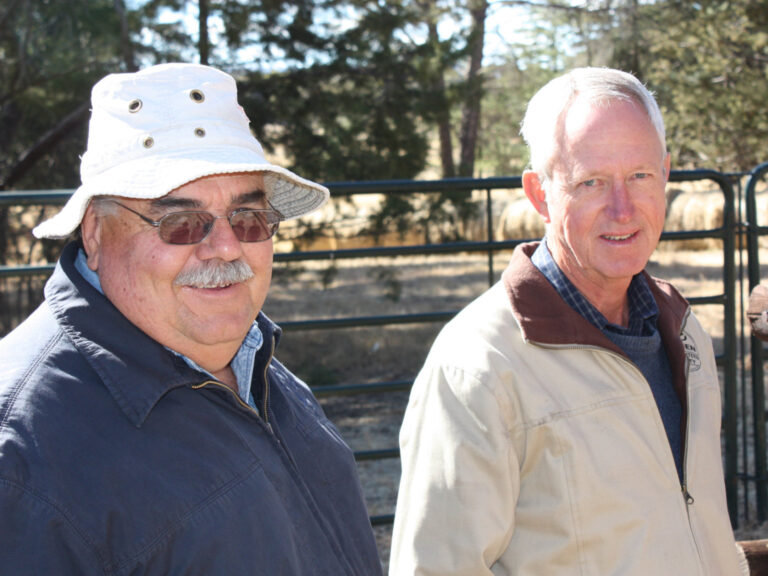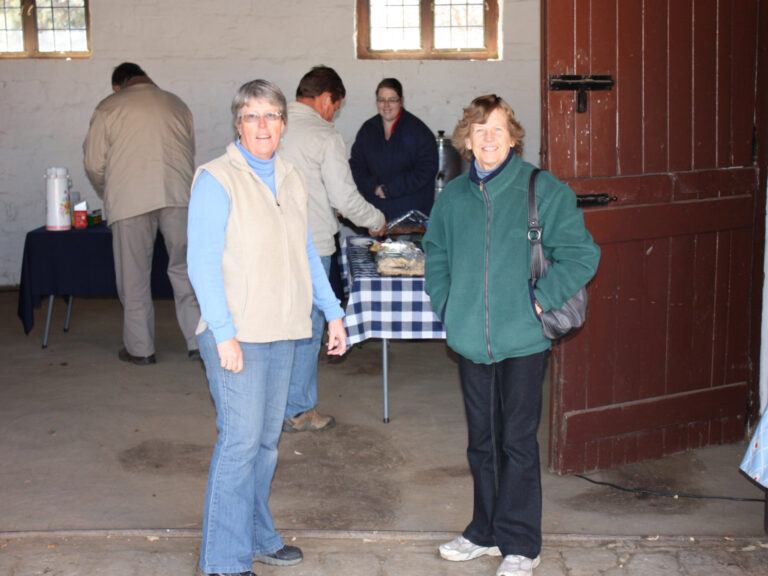Ottershaw Beefmasters
Breeding Since 1990
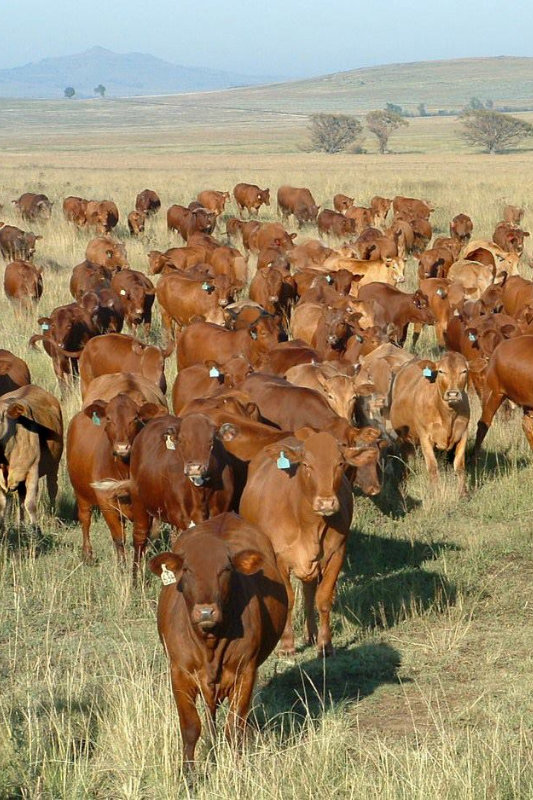
Some of the Ottershaw Farms properties have been family farms since the 1930’s & 40’s, and Arthur Gilbert is the third generation on Ottershaw and other farms in the Westminster / Tweespruit district of the Free State, close to the N8, approximately 100km east of Bloemfontein and 40km west of Ladybrand.
In the 1970’s, the area’s farmers relied on dryland crop production for most of their income, which came predominantly from wheat and some maize, then later sunflowers as well. The animal factor on most farms contributed much less than it does now, and one of Arthur’s first responsibilities after joining his father Cliff, was to take charge of the livestock on the farm, a South Devon dual purpose herd, being ‘dairy ranched’. He decided to start a proper beef enterprise, to crossbreed, to use a breeding season and to weigh calves as a selection tool.

About Ottershaw
Various breeds were initially used as crosses, with varying success. Arthur’s friend Graham Hart had built up a herd of functional Santa Gertrudis, and it was a natural progression to buy bulls from him, starting in the early 80’s. The performance of the crossbred progeny was excellent, but we wanted to simplify mating management by working with a single composite breed whose progeny would possess similar hybrid vigour to the criss-crossed herd.
Dan joined the partnership in 1982 and we started establishing grass pastures on all our marginal cropping lands, and gradually increased the herd size. Having read about Tom Lasater and his beef breeding principles, and because we were impressed by the Beefmaster animals we had seen, we bought our first Beefmaster bulls in 1990. Graham was intrumental in persuading us to join the Beefmaster Society, our females were inspected and most were approved as first acceptance Beefmasters.
The Ottershaw Beefmaster herd has evolved from there and has become an important part of the farm business. Consultant Erwin Church made an impact from the start and we learnt a great deal from him.
Both Dan and Arthur get much enjoyment from the cattle and are active in the Free State Beefmaster Club. Arthur is a previous President of the Beefmaster Society.
Meet The Team
Arthur Gilbert
Arthur went to school in Grahamstown, matriculating at St Andrew’s College. After doing his National Service in the SA Engineers Corps, he studied Agriculture at the University of Natal in Pietermaritzburg, and graduated with a BSc(Agric). He then joined his father Cliff on the farm, and in 1973 married Rose Trinder–Smith, a Dewetsdorp farmer’s daughter. Soon after, Arthur was offered an opportunity to work for Massey Ferguson North America, and they left for Des Moines, Iowa, where they lived for almost a year. It was excellent experience, and after travelling all over the US and Canada, and in Europe and the UK, it was back to the farm to join his dad.
Dan Burnett
Dan grew up on a sugar estate in Big Bend, Swaziland and went to school at St Charles College in Pietermaritzburg. While working in Durban he met Ann, Arthur’s sister. They married and moved to the farm in 1982, and a successful partnership comprising Dan, Ann, Arthur and Rose has developed over the years. The Gilberts have four daughters, while the Burnetts have a son and a daughter.
Sarel Mokhele
Stockman Sarel Mokhele grew up on the farm, and Dan and Arthur are pleased to have a young man with energy and good knowledge of the animals he is responsible for.
6 Reasons why you should choose Ottershaw Beefmasters?
Our Beefmaster females have proved to us, as well as to the commercial beef producers we’ve sold bulls to, that they are efficient and productive.
Our Females
Because our females produce efficiently while still maintaining a high level of fertility, they indicate that the herd is well adapted to its environment.
Large Herd
Our herd is large enough for sufficient selection pressure when selecting bulls and replacement females. We mate approximately 300 registered cows and heifers per year.
Avoid Overfeeding
We avoid overfeeding our bulls and replacement heifers. Well adapted, unpampered bulls and females bought from us will not break down.
Free of visible faults
By selecting for good temperament and by means of regular inspections, we ensure that our animals are functionally efficient and free of visible faults.
Proven 25+ years
South African Beefmasters have proved over the years since the SA Beefmaster Society was formed in 1984, that they are a profitable breed to farm with.
Efficiency
Our average conception rate over the past 20 years is 88.6%.
FAQ
South African Beefmasters have proved over the past 25 years that they are a profitable breed to farm with. We base this on two main factors: fertility and production.
The most important is fertility. All cattlemen want to wean good calves, but they also recognize how important their females’ fertility is in producing beef profitably. The latest official ARC Beefmaster Inter Calving Period of 411 days has shown steady improvement, and although it compares well with other breeds, the Society believes that there is potential for the ICP to come down to below 400 days, and expect the next twelve months to show movement in this direction.
Secondly, all beef producers want their cows to produce as efficiently as possible, in terms of weaner mass produced as a percentage of cow mass, on whatever grazing is available. Lasater set a target ratio of 50% for this and the latest official ARC Beefmaster Performance Testing ratio is 47.2%, the highest of all breeds with a minimum sample size of 600 cows and their calves, that were weighed in 2010 (6222 Beefmasters were weighed).
Tom Lasater, the founder of the Beefmaster breed, said: ‘Good genetics mean good economics’. We believe that the fertility and sustainable production shown above suggests that registered South African Beefmaster females’ genetics show up extremely well against other breeds. Because of this and because there are breeding animals available, which by eye are obviously functional, Beefmasters have become the logical choice, and this is borne out by more and more cattlemen throughout Southern Africa choosing Beefmasters.
The Beefmaster Society continues to show growth. The number of breeders is increasing, but we see an even greater increase in the total number of breeding animals per breeder.
Beefmaster breeders’ average herd size is the largest of all breeds in South Africa. We believe that a large registered herd is beneficial to commercial beef producers for two reasons:
The first is that it is an indication that there is high selection pressure on each potential bull, thereby improving the quality of the bulls offered into the market.
The second reason that a large herd size is a healthy sign, is that it indicates that the breeder is running his or her herd on a relatively large, extensive scale, which suggests that herd management, especially of females, is ‘commercial’ in style and that their breeding stock should be well adapted to commercial conditions.
Tom Lasater, in his book “The Lasater Philosophy of Cattle Raising”, refers to the Six Essentials: Disposition, Fertility, Weight, Conformation, Milk Production and Hardiness.
These essentials are actually inter-related in many respects. For instance we’ve dealt with fertility, which can be selected for by ruthless culling of non-pregnant heifers and cows, but her ability to raise a calf every year may also be dependent on her disposition or temperament, and on her hardiness or adaptability to her environment.
In the same way, although a female’s production efficiency is largely dependent on her milk production for her calf, the above factors can also influence the raising of her calf. Selection is by recording calf weaning weights and cow weights at weaning.
Good disposition or temperament is essential to select for, because one wild animal can upset the whole herd, making managing the animals difficult. Calm cows are better mothers, however a good mother should protect her new-born calf fiercely. Animals with poor temperament are easily identified at weaning or at any later stage and should be culled.
Weight firstly refers to calf weaning weight, which is tied up with the cow’s milk production, and secondly young bulls’ or heifers’ ability to grow on their own after weaning. Weights can be recorded at weaning, 12 months and 18 months, or in a phase D bull growth test.
Hardy or well adapted animals are better doers because they can produce in harmony with their environment, thriving on the nutrition available, as well as being resistant to diseases, ticks, heat and cold. The mature weight or size of a cow can also influence her adaptability.
There are two aspects to conformation, firstly to look for structural and functional soundness and to eliminate faults by culling, and secondly to assess carcase conformation, type and size. Visual appraisal of animals is essential for this, and it is especially important in the selection of bulls.
Our Beefmaster females have proved to us, as well as to the commercial beef producers we’ve sold bulls to, that they are efficient and productive. Our average main mating season conception rate over the past 10 years is 89%, with the highest being 96% and the lowest 83%. Our herd’s average ARC Reproduction Index is currently 107.
Because our females produce efficiently while still maintaining a high level of fertility, they indicate that the herd is well adapted to its environment. This means that the cows produce an optimum amount of milk, and that their progeny grow at an optimum rate, neither being too high nor too low for sustainable commercial beef production.
Our herd is large enough for sufficient selection pressure when selecting bulls and replacement females. We mate approximately 330 registered cows and heifers per year.
We avoid overfeeding our bulls and replacement heifers. Because most of the beef production in South Africa is by way of cow / calf operations on natural grazing, we believe that bulls sold to our clients should be raised under extensive conditions, and are only fed enough for rounding off before our annual sale. Well adapted, unpampered bulls and females bought from us will not break down.
If a breeder wants to sell bulls and females as breeding stock, efficient reproduction and production alone aren’t enough. We have been fortunate to have had well-known consultant Erwin Church helping with our selections since 1990, ensuring that our animals are functionally efficient and free of visible faults.
What do we think a commercial bull buyer wants from a breeder?
- Integrity
- The herd recognized as commercially productive
- Sound, strictly selected animals
- Basic reproduction and production figures
- Value for money
We Know Beef
Get in touch
Near Westminster and Tweespruit in the Free State, close to the N8, approximately 100km east of Bloemfontein and 40km west of Ladybrand.
- otfarms@ripplesoft.co.za
- info@ottershawbeefmasters.com
- PO Box 617, Tweespruit, 9770
Arthur Gilbert
Dan Burnett


